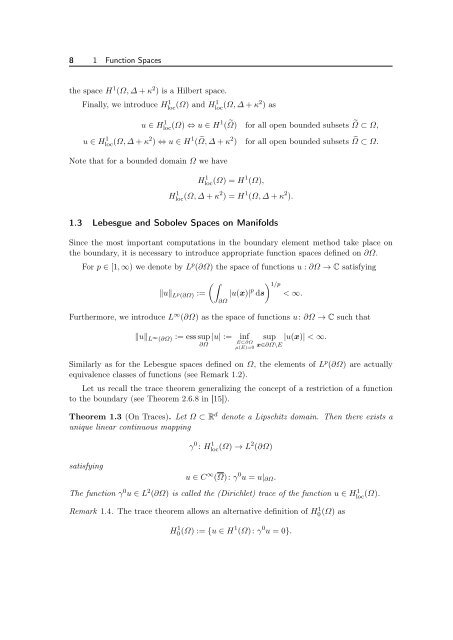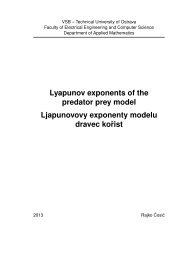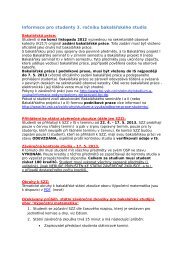The Boundary Element Method for the Helmholtz Equation ... - FEI VÅ B
The Boundary Element Method for the Helmholtz Equation ... - FEI VÅ B
The Boundary Element Method for the Helmholtz Equation ... - FEI VÅ B
You also want an ePaper? Increase the reach of your titles
YUMPU automatically turns print PDFs into web optimized ePapers that Google loves.
8 1 Function Spaces<strong>the</strong> space H 1 (Ω, ∆ + κ 2 ) is a Hilbert space.Finally, we introduce Hloc 1 (Ω) and H1 loc (Ω, ∆ + κ2 ) asu ∈ Hloc 1 (Ω) ⇔ u ∈ H1 ( Ω) <strong>for</strong> all open bounded subsets Ω ⊂ Ω,u ∈ Hloc 1 (Ω, ∆ + κ2 ) ⇔ u ∈ H 1 ( Ω, ∆ + κ 2 ) <strong>for</strong> all open bounded subsets Ω ⊂ Ω.Note that <strong>for</strong> a bounded domain Ω we haveHloc 1 (Ω) = H1 (Ω),Hloc 1 (Ω, ∆ + κ2 ) = H 1 (Ω, ∆ + κ 2 ).1.3 Lebesgue and Sobolev Spaces on ManifoldsSince <strong>the</strong> most important computations in <strong>the</strong> boundary element method take place on<strong>the</strong> boundary, it is necessary to introduce appropriate function spaces defined on ∂Ω.For p ∈ [1, ∞) we denote by L p (∂Ω) <strong>the</strong> space of functions u : ∂Ω → C satisfying∥u∥ L p (∂Ω) :=∂Ω|u(x)| p ds 1/p< ∞.Fur<strong>the</strong>rmore, we introduce L ∞ (∂Ω) as <strong>the</strong> space of functions u: ∂Ω → C such that∥u∥ L ∞ (∂Ω) := ess sup |u| :=∂ΩinfE⊂∂Ωµ(E)=0sup |u(x)| < ∞.x∈∂Ω\ESimilarly as <strong>for</strong> <strong>the</strong> Lebesgue spaces defined on Ω, <strong>the</strong> elements of L p (∂Ω) are actuallyequivalence classes of functions (see Remark 1.2).Let us recall <strong>the</strong> trace <strong>the</strong>orem generalizing <strong>the</strong> concept of a restriction of a functionto <strong>the</strong> boundary (see <strong>The</strong>orem 2.6.8 in [15]).<strong>The</strong>orem 1.3 (On Traces). Let Ω ⊂ R d denote a Lipschitz domain. <strong>The</strong>n <strong>the</strong>re exists aunique linear continuous mappingγ 0 : H 1 loc (Ω) → L2 (∂Ω)satisfyingu ∈ C ∞ (Ω): γ 0 u = u| ∂Ω .<strong>The</strong> function γ 0 u ∈ L 2 (∂Ω) is called <strong>the</strong> (Dirichlet) trace of <strong>the</strong> function u ∈ H 1 loc (Ω).Remark 1.4. <strong>The</strong> trace <strong>the</strong>orem allows an alternative definition of H0 1 (Ω) asH 1 0 (Ω) := {u ∈ H 1 (Ω): γ 0 u = 0}.









